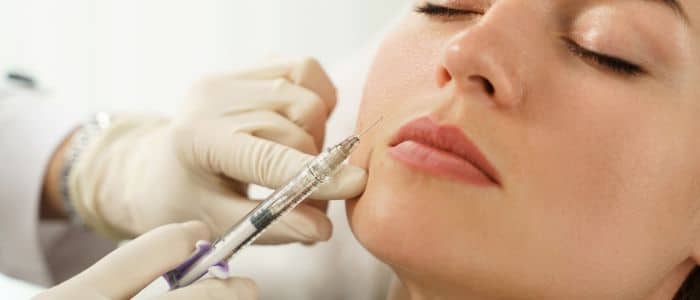
Table of Contents
- Everything You Need to Know about Dermal Fillers Removal in Chester
- What Are Dermal Fillers?
- Types of Dermal Fillers
- Common Reasons for Getting Dermal Fillers
- Why Remove Dermal Fillers?
- Dermal Fillers Removal Process
- Risks and Considerations Associated with Dermal Fillers Removal
- Importance of Choosing a Qualified and Experienced Plastic Surgeon
- Alternatives to Dermal Fillers Removal
- FAQs about Dermal Fillers Removal
- Further Reading about Injectables with Consultant Plastic Surgeon Anca Breahna
Everything You Need to Know about Dermal Fillers Removal in Chester
Dermal fillers are a popular choice for those seeking a youthful boost without the commitment of surgery. These injectable solutions promise to smooth out wrinkles, plump up sunken areas, and bestow a rejuvenated appearance. However, like all cosmetic procedures, the results may not always align with one’s expectations, leading some to contemplate the reversal of their decision. Whether you’re experiencing a change of heart, medical complications, or simply curious about the process, this blog discusses the details of dermal filler removal, ensuring you’re equipped with the knowledge to make informed choices.
Chester Consultant Plastic Surgeon Anca Breahna stands out with a reputation built on precision, patient-centric approaches, and a keen eye for aesthetics. Anca Breahna offers a diverse range of non-surgical procedures tailored to meet individual needs. From advanced dermal fillers and skin relaxing treatments to skin cancer surgery, her repertoire is vast, ensuring that patients have access to the latest and most effective treatments.
What Are Dermal Fillers?
Dermal fillers, often simply referred to as ‘fillers’, are injectable substances used to restore or enhance facial contours, diminish the appearance of lines and wrinkles, and improve skin’s overall texture and hydration. They have become a cornerstone in non-surgical aesthetic treatments, offering a minimally invasive solution to age-related facial changes.
Types of Dermal Fillers
- Hyaluronic Acid (HA) Fillers: Naturally found in the skin, HA fillers like Juvederm and Restylane are renowned for their ability to retain moisture, making them a top choice for adding volume and smoothing wrinkles
- Calcium Hydroxylapatite: Used in fillers like Radiesse, this substance is thicker than HA and is often used for deeper wrinkles and enhancing facial contours
- Poly-L-lactic Acid: Sculptra is a notable example of this type of filler, which stimulates the skin to produce more collagen, resulting in a gradual increase in volume
- Polymethylmethacrylate (PMMA) Microspheres: Found in products like Bellafill, these are considered semi-permanent fillers that provide support to the skin and are often used for deeper wrinkles and scars
Common Reasons for Getting Dermal Fillers
- Ageing: As we age, our skin loses elasticity and volume, leading to wrinkles and sagging. Fillers can help counteract these changes by restoring lost volume and smoothing out wrinkles
- Enhancement: Some individuals opt for fillers to enhance certain facial features, such as plumping the lips or accentuating the cheekbones
- Correction: Fillers can also be used to correct asymmetries or to smooth out scars and other skin imperfections
Why Remove Dermal Fillers?

The allure of dermal fillers lies in their ability to offer instant rejuvenation, often with minimal downtime. However, the journey with fillers doesn’t always follow a straightforward path. There are various reasons individuals might contemplate the removal of these cosmetic enhancements. Here are some of them:
Dissatisfaction with Appearance
- Overcorrection: Sometimes, in the quest for perfection, one might end up with more filler than desired, leading to an overfilled or unnatural look
- Asymmetry: While the goal is often symmetrical enhancement, there can be instances where fillers result in an uneven appearance, prompting the desire for correction or removal
- Migration: On rare occasions, fillers might migrate from the initial injection site, leading to unintended aesthetic outcomes
Medical Complications or Allergic Reactions
- Granulomas: These are small, hard lumps that can form under the skin after filler injections. They might require treatment or removal of the filler
- Infection: Though rare, infections can occur post-injection, necessitating medical intervention and possibly the removal of the filler
- Allergic Reactions: Some individuals might experience allergic reactions to the filler material, leading to redness, swelling, or itching
Natural Ageing and the Desire for a Change
- Evolving Preferences: As we age, our aesthetic preferences can evolve. What seemed appealing in one’s 30s might not resonate the same way in their 40s or 50s
- Changing Facial Structure: With age, our facial bone structure and fat distribution change. Fillers that once complemented one’s features might no longer do so
Dermal Fillers Removal Process
The process of dermal fillers can be complex, and the decision to reverse or adjust a previous treatment adds another layer to the process. Understanding the removal process is crucial for those contemplating this step.
- Consultation
- Importance of Consulting with a Qualified Practitioner: Before starting the dermal fillers removal process, it’s important to consult with a reputable and experienced plastic surgeon such as Anca Breahna. She can assess the situation, provide guidance, and recommend the best course of action
- What to Expect during the Consultation: The consultation usually involves a thorough examination of the treated area, a discussion about the reasons for removal, and an exploration of potential solutions. It’s also an opportunity to address any concerns or questions
- Methods of Removal
- Hyaluronidase Injections: For HA-based fillers, hyaluronidase is an enzyme that can dissolve the filler. It’s injected into the area where the filler is present, breaking it down and allowing the body to naturally eliminate it. The process is relatively quick, and results can be seen within hours to days
- Manual Extraction: In rare cases, if a lump or granuloma forms, Anca might need to make a small incision to manually extract the filler. This method is less common and is typically reserved for specific situations
- Waiting for Natural Degradation: Some individuals might choose to let the filler dissolve naturally over time. The longevity of fillers varies, with some lasting six months, while others can remain for up to two years or more. This method requires patience but is entirely non-invasive
- Post-removal Care
- Tips for Reducing Swelling and Bruising: After the removal process, it’s common to experience some swelling or bruising. Applying a cold compress, keeping the head elevated, and avoiding strenuous activities can help mitigate these effects
- When to Seek Medical Attention: If there’s excessive pain, prolonged swelling, signs of infection, or any other unusual symptoms post-removal, it’s essential to contact Anca or her team or seek medical attention immediately
Risks and Considerations Associated with Dermal Fillers Removal

While dermal fillers are considered a minimally invasive procedure, like all medical procedures, they come with their own set of risks, such as:
- Swelling and Bruising: These are the most common side effects post-removal. While they typically subside within a few days, it’s crucial to follow post-care instructions to minimise discomfort
- Infection: Any procedure that involves breaking the skin, even if minimally invasive, carries a risk of infection. Ensuring the procedure is done in a sterile environment and following aftercare instructions can mitigate this risk
- Scarring: Especially in cases where manual extraction is required, there’s a potential risk of scarring. However, in the hands of an experienced practitioner, this risk is minimal
- Allergic Reactions: While rare, some individuals might react to the substances used during the removal process, such as hyaluronidase
Importance of Choosing a Qualified and Experienced Plastic Surgeon
The skill and experience of the plastic surgeon play a pivotal role in the outcome of the procedure. An experienced professional can minimise risks, ensure the procedure is as comfortable as possible, and achieve optimal results.
Always ensure that the practitioner has the necessary qualifications and has undergone specific training for dermal filler procedures and their removal.
Alternatives to Dermal Fillers Removal
Dermal fillers removal isn’t the only solution. For those who might be hesitant about the removal process or are seeking other avenues to refine their appearance, there are several alternative approaches to consider:
Adjusting the Filler
- Balancing with More Filler: In cases where asymmetry or overfilling is a concern, a skilled practitioner might recommend adding more filler to balance out the appearance rather than removing it. This can help achieve a more harmonious and natural look
- Reshaping: Using specific techniques, Anca can manipulate and reshape the existing filler to better align with the individual’s aesthetic preferences
Non-Surgical Treatments to Improve Appearance
- Skin relaxing injections: While these injections don’t add volume like fillers, they can smooth out wrinkles by temporarily relaxing the underlying muscles. It’s especially effective for dynamic wrinkles, such as crow’s feet or forehead lines
FAQs about Dermal Fillers Removal

How long does the removal process take?
The duration of the dermal fillers removal process largely depends on the method used. Hyaluronidase injections can take as little as a few minutes, while waiting for natural degradation can span months to years. Always consult with Anca for a precise timeframe.
Is the removal painful?
Most patients describe the sensation as a mild discomfort rather than pain. Topical anaesthetics or numbing creams can be applied to minimise any discomfort during the procedure.
Can all types of fillers be removed?
Not all fillers are created equal. While hyaluronic acid fillers can be easily dissolved with hyaluronidase, other types, like PMMA or calcium hydroxylapatite, are not as easily reversible. It’s essential to know the type of filler you have and discuss removal options with Anca.
How soon can I get fillers again after removal?
This largely depends on the reason for removal and the individual’s skin condition. In cases where fillers are dissolved, some patients might opt to have them re-injected after a few days. However, if there were complications or allergic reactions, it’s advisable to wait longer and consult with a professional.
Are there any long-term side effects of filler removal?
When performed by a skilled plastic surgeon, long-term side effects are rare. Potential risks include scarring, skin discolouration, or uneven texture. It’s crucial to follow post-procedure care instructions and keep in touch with your plastic surgeon to monitor any changes.
Will my skin look saggy or wrinkled after filler removal?
Most patients find that their skin returns to its pre-filler state after removal. But if the skin was significantly stretched due to large amounts of filler, there might be some laxity. Treatments like RF or microneedling can help improve skin’s elasticity and appearance.
Medical References about Dermal Fillers Removal
Further Reading about Injectables with Consultant Plastic Surgeon Anca Breahna
- Read more about Dermal Fillers in Chester
- Read more about Skin Relaxing Injections
- Read more about Desirial Injections for Vaginal Dryness
- Read more about Aqualyx – Fat Dissolving Injections
- Read more about Dermal Fillers for Hands – Restoring Volume and Reducing Signs of Ageing






